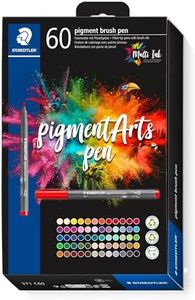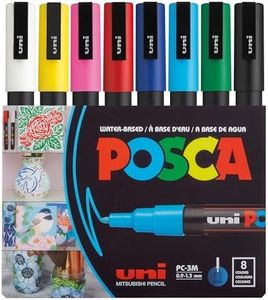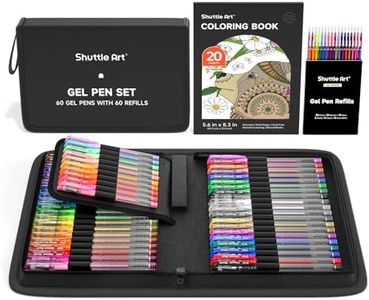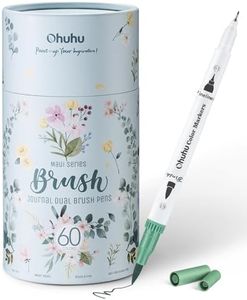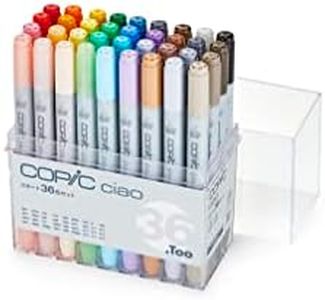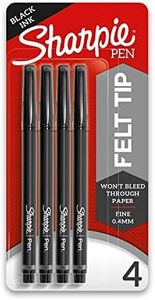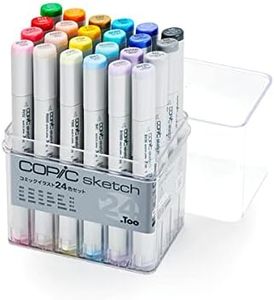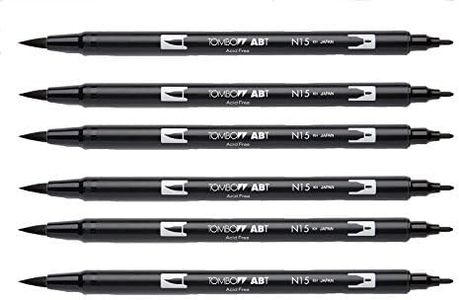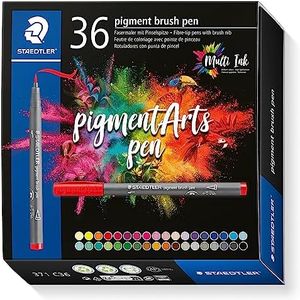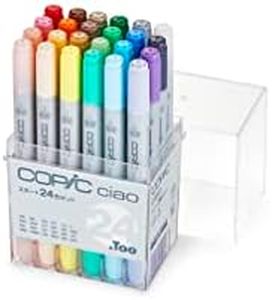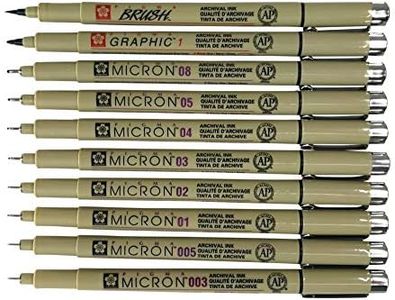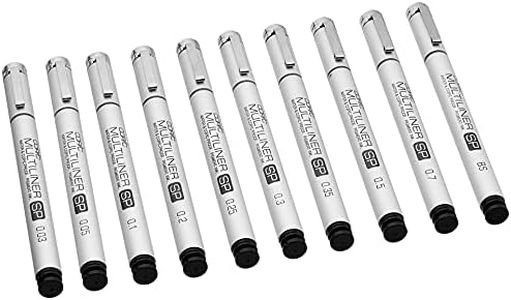We Use CookiesWe use cookies to enhance the security, performance,
functionality and for analytical and promotional activities. By continuing to browse this site you
are agreeing to our privacy policy
10 Best Pens For Drawing
From leading brands and best sellers available on the web.Buying Guide for the Best Pens For Drawing
When choosing pens for drawing, it's essential to consider how they match your artistic needs and preferences. The right pen can make a big difference in how your lines look, how comfortable drawing feels, and how your final art piece turns out. Think about the style you like, whether you want to use color or just black ink, and the types of surfaces you'll be working on. Different pens offer unique features that can suit various drawing techniques, from detailed sketches to bold illustrations.Nib TypeThe nib, or tip, is where ink meets the paper, and it’s crucial because it determines your line quality and control. There are several types: fine liners (for precise, consistent lines), brush tips (which can create lines of varying thickness), and chisel tips (good for calligraphy strokes). If you like detailed work or technical drawing, go for a fine liner or a very fine nib. For expressive, dynamic lines or if you’re into lettering, a brush tip will suit you best. Consider your main use—detailed versus expressive illustration—to choose the right nib type for your needs.
Ink TypeInk type affects how your artwork looks and lasts. There are water-based, pigment-based, alcohol-based, and gel inks. Pigment-based inks are generally waterproof and fade-resistant, making them perfect if longevity matters or if you plan to add watercolor over your lines. Water-based inks are usually less permanent and can smear if wetted, but they’re great for easy clean up and blending. Alcohol-based inks dry quickly and are vibrant, excellent for marker work but can bleed through thin paper. Choose the ink type depending on whether you need permanence, blendability, or simple everyday use.
Line WidthLine width is how thick or thin your drawn line will be, and it impacts the level of detail you can achieve. Pens come in sizes ranging from ultra-fine (like 0.05mm) to bold (around 2mm or even thicker for markers). Thinner lines are excellent for precise details, hatching, stippling, or technical drawings. Medium and thicker tips are better for outlines, filling larger areas, or making expressive marks. Think about the size and detail of most of your drawings—if you focus on small, intricate illustrations, opt for finer tips; for bold sketches or poster designs, broader tips are better.
Comfort and GripDrawing often means holding your pen for long periods, so comfort matters. Some pens have cushioned or ergonomic grips, lightweight bodies, or textured handles to prevent slipping. If your hand tends to tire easily, or if you draw for hours, seek pens with added comfort features. If this is less of a concern or you like slim, simple designs, a basic barrel may suit you just fine. Try to imagine (or test) what feels good in your hand for longer sessions.
Paper CompatibilityNot all pens perform the same on all kinds of paper. Some inks may bleed through or feather on thinner paper, while others work best on smooth or textured surfaces. If you use specialty papers or mixed media, look for pens that specify good performance with those materials. If you’re mostly drawing on regular sketchbooks or printer paper, make sure the pen doesn’t bleed or smudge. Consider what kinds of paper you use most often and match your pen accordingly.
Refillable vs. DisposableSome drawing pens are designed to be refilled, while others are meant to be used and tossed. Refillable pens can be more economical and environmentally friendly in the long run, plus you can switch out different inks if you like. Disposable pens are convenient and often more affordable initially, but once they run out, you’ll need to replace the whole pen. Pick refills if you draw frequently or value sustainability, or disposables if you prefer convenience and a low-maintenance routine.
